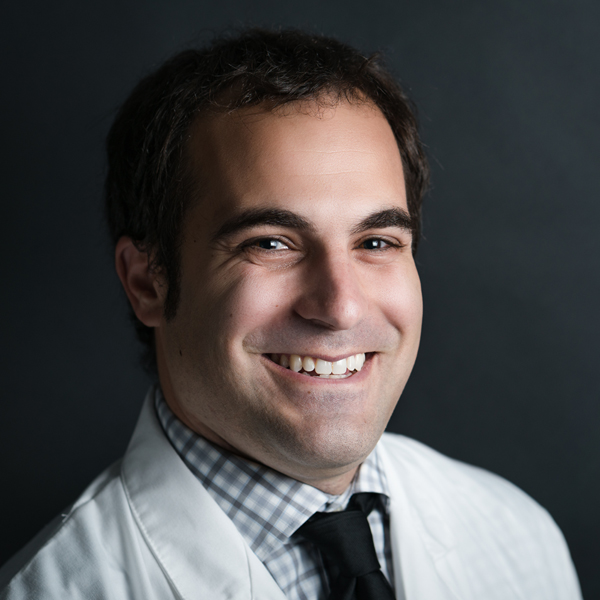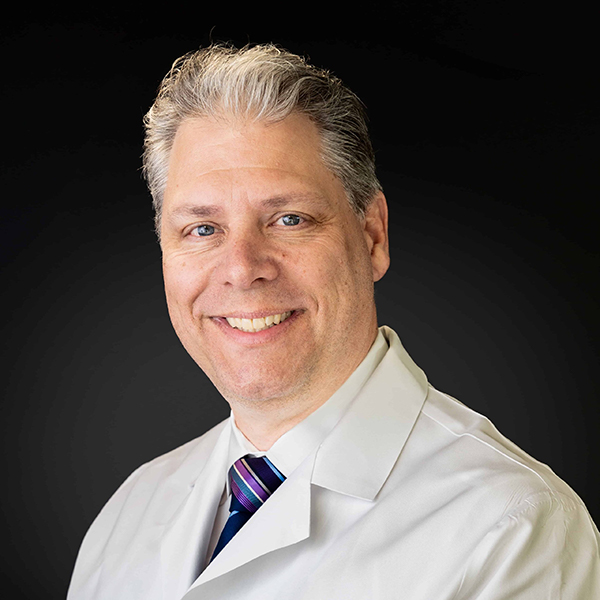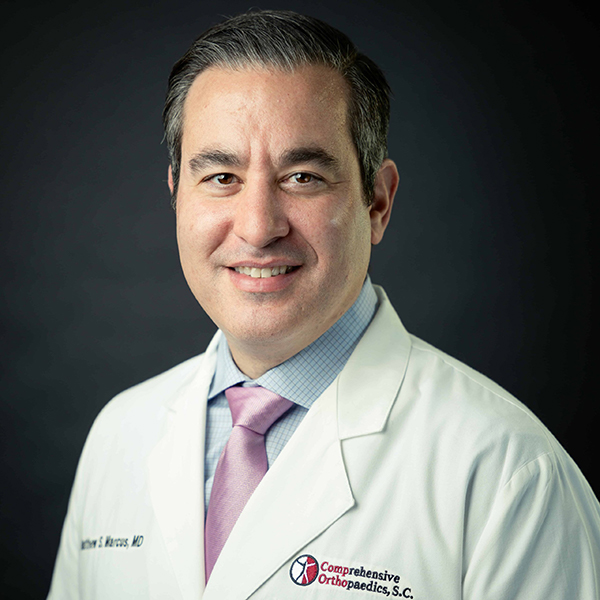Arthritis Treatment
Arthritis Specialist in Kenosha & Burlington, WI

What is arthritis?
Arthritis and other rheumatic diseases are common conditions that cause pain, swelling, and limited movement. They affect joints and connective tissues around the body. Millions of people in the U.S. have some form of arthritis.
Arthritis means inflammation of a joint. A joint is where two or more bones meet. There are more than 100 different arthritis diseases. Rheumatic diseases include any condition that causes pain, stiffness, and swelling in joints, muscles, tendons, ligaments, or bones. Arthritis is usually chronic, which means that it is ongoing.
Arthritis and other rheumatic diseases are more common in women than men. They are also often associated with old age. This is because the most common form of arthritis, osteoarthritis, occurs more often in older adults. However, arthritis and other rheumatic diseases affect people of all ages.
The three most common forms of arthritis are:
- Osteoarthritis. This is the most common type of arthritis. It is a chronic disease of the joints, especially the weight-bearing joints of the knee, hip, and spine. Osteoarthritis destroys cartilage and narrows the joint space. It can also cause bone overgrowth, bone spurs, and reduced function. It occurs in most people as they age. It may also occur in young people as a result of injury or overuse.
- Fibromyalgia. This is a disease that causes chronic, widespread pain in muscles and soft tissues around the body.
- Rheumatoid arthritis. This is an inflammatory disease of the lining of the joint (synovium). The inflammation may affect all of the joints.
Other forms of arthritis or related disorders include:
- Gout. This condition causes urate crystals to build up in small joints, such as the big toe. It causes pain and inflammation.
- Systemic lupus erythematosus (lupus). Lupus is a chronic autoimmune disorder that causes episodes of inflammation and damage in joints, tendons, and organs.
- Scleroderma. This is an autoimmune disease that causes thickening and hardening of the skin and other connective tissue in the body.
- Ankylosing spondylitis. This disease causes the bones of the spine to grow together.
- Juvenile idiopathic arthritis (JIA) or juvenile rheumatoid arthritis (JRA). This is a form of arthritis in children that causes inflammation and stiffness of joints. Children often outgrow JRA. But it can affect bone development in a growing child.
What causes arthritis?
Who is at risk for arthritis?
What are the symptoms of arthritis?
How is arthritis diagnosed?
How is arthritis treated?
What are the complications of arthritis?
Living with arthritis
The cause of arthritis depends on the type of arthritis. Osteoarthritis is caused by the wear and tear of the joint over time or because of overuse. Rheumatoid arthritis, lupus, and scleroderma are caused by the body’s immune system attacking the body’s own tissues. Gout is caused by the buildup of crystals in the joints. Arthritis can be linked to genes. People with genetic marker HLA-B27 have a higher risk of ankylosing spondylitis. Many other forms of arthritis are idiopathic. This means that the cause is not known.
Key points about arthritis
- Arthritis and other rheumatic diseases cause pain, swelling, and limited movement in joints and connective tissues in the body.
- Arthritis and other rheumatic diseases affect people of all ages. They are more common in women than men.
- Symptoms may include pain, stiffness, swelling, warmth, or redness in one or more joints.
- There is no cure for arthritis. The goal of treatment is to limit pain and inflammation and preserve joint function.
- Treatment options include medications, weight reduction, exercise, and surgery.
Some risk factors for arthritis that can’t be avoided or changed include:
- Age. The older you are, the more likely you are to develop arthritis.
- Gender. Women are more likely to have arthritis than men.
- Heredity. Some types of arthritis are associated with specific genes.
Risk factors that may be avoided or changed include:
- Weight. Being overweight or obese can damage the knee joints. This can make them more likely to develop osteoarthritis.
- Injury. A joint that has been damaged by an injury is more likely to develop arthritis at some point.
- Infection. Reactive arthritis can affect joints after an infection.
- Occupation. Work that involves repetitive bending or squatting can lead to knee arthritis.
Symptoms can occur a bit differently in each person. The most common symptoms include:
- Pain in one or more joints that doesn’t go away, or comes back
- Warmth and redness in one or more joints
- Swelling in one or more joints
- Stiffness in one or more joints
- Trouble moving one or more joints in a normal way
The symptoms of arthritis can be like other health conditions. Make sure to see your health care provider for a diagnosis.
The process starts with a medical history and a physical exam. Tests may also be done. These include blood tests such as:
- Antinuclear antibody (ANA) test, to check the levels of antibodies in the blood
- Complete blood count, to see if white blood cell, red blood cell, and platelet levels are normal
- Creatinine, to check for kidney disease
- Sedimentation rate, to detect inflammation
- Hematocrit, to measure the number of red blood cells
- Rheumatoid factor test, to see if rheumatoid factor is present in the blood
- White blood cell count, to determine the level of white blood cells in the blood
- Uric acid, to help diagnosis gout
Other tests may be done, such as:
- Joint aspiration (arthrocentesis). A small sample of the synovial fluid is taken from a joint. It’s tested to see if crystals, bacteria, or viruses are present.
- X-rays or other imaging tests. These are done look at the extent of damage to a joint.
- Urine test. This is done to check for protein and various kinds of blood cells.
- HLA tissue typing. This is done to look for genetic markers of ankylosing spondylitis.
- Skin biopsy. Tiny pieces of tissue are taken to check under a microscope. This helps to diagnose a type of arthritis that involves the skin, such as lupus or psoriatic arthritis.
- Muscle biopsy. Tiny pieces of tissue are taken to check under a microscope. This helps to diagnose conditions that affect muscles. These include polymyositis or vasculitis.
Treatment will depend on your symptoms, your age, and your general health. It will also depend on how what type of arthritis you have, and how severe the condition is. A treatment plan is tailored to each person with his or her health care provider.
There is no cure for arthritis. The goal of treatment is often to limit pain and inflammation, and help ensure joint function. Treatment plans often use both short-term and long-term methods.
Short-term treatments include:
- Medications. Short-term relief for pain and inflammation may include pain relievers such as acetaminophen, aspirin, ibuprofen, or other nonsteroidal anti-inflammatory medications.
- Heat and cold. Pain may be eased by using moist heat (warm bath or shower) or dry heat (heating pad) on the joint. Pain and swelling may be eased with cold (ice pack wrapped in a towel) on the joint.
- Joint immobilization. The use of a splint or brace can help a joint rest and protect it from further injury.
- Massage. The light massage of painful muscles may increase blood flow and bring warmth to the muscle.
- Transcutaneous electrical nerve stimulation (TENS). Pain may be reduced with the use of a TENS device. The device sends mild, electrical pulses to nerve endings in the painful area. This blocks pain signals to the brain and changes pain perception.
- Acupuncture. This is the use of thin needles that are inserted at specific points in the body. It may stimulate the release of natural, pain-relieving chemicals made by the nervous system. The procedure is done by a licensed health care provider.
Long-term treatments include:
- Disease-modifying antirheumatic drugs (DMARDs). These prescription medications may slow down the disease and treat any immune system problems linked to the disease. Examples of these medications include methotrexate, hydroxychloroquine, sulfasalazine, and chlorambucil.
- Corticosteroids. Corticosteroids reduce inflammation and swelling. These medications, such as prednisone, can be taken orally or as an injection.
- Hyaluronic acid therapy. This is a joint fluid that appears to break down in people with osteoarthritis. It can be injected into a joint, such as the knee, to help relieve symptoms.
- Surgery. There are many types of surgery, depending on which joints are affected. Surgery options may include arthroscopy, fusion, or joint replacement. Full recovery after surgery takes up to 6 months. A rehabilitation program after surgery is an important part of the treatment.
Arthritis treatment can include a team of health care providers, such as:
- Orthopedist/orthopedic surgeon
- Rheumatologist
- Physiatrist
- Primary care doctor (family medicine or internal medicine)
- Rehabilitation nurse
- Dietitian
- Physical therapist
- Occupational therapist
- Social worker
- Psychologist/psychiatrist
- Recreational therapist
- Vocational therapist
Because arthritis causes joints to degenerate over time, it can cause disability. It can cause pain and movement problems that cause a person to be less able to carry out normal daily activities and tasks.
Although there is no cure for arthritis, it is important to help keep joints functioning by reducing pain and inflammation. Work on a treatment plan with your health care provider that includes medication and therapy. Work on lifestyle changes that can improve your quality of life. Lifestyle changes include:
- Weight loss. Extra weight puts more stress on weight-bearing joints, such as the hips and knees.
- Exercise. Some exercises may help reduce joint pain and stiffness. These include swimming, walking, low-impact aerobic exercise, and range-of-motion exercises. Stretching exercises may also help keep the joints flexible.
- Activity and rest. To reduce stress on your joints, alternate between activity and rest. This can help protect your joints and lessen your symptoms.
- Use of assistive devices. Canes, crutches, and walkers can help to keep stress off certain joints and to improve balance.
- Use of adaptive equipment. Reachers and grabbers allow people to extend their reach and reduce straining. Dressing aids help people get dressed more easily.
- Managing use of medications. Long-term use of some anti-inflammatory medications can lead to stomach bleeding. Work with your health care provider to develop a plan to reduce this risk.

Next steps
Tips to help you get the most from a visit to your health care provider:
-
Before your visit, write down questions you want answered.
-
Bring someone with you to help you ask questions and remember what your provider tells you.
-
At the visit, write down the names of new medicines, treatments, or tests, and any new instructions your provider gives you.
-
If you have a follow-up appointment, write down the date, time, and purpose for that visit.
-
Know how you can contact your provider if you have questions.
Expert Hip Treatment at Comprehensive Orthopaedics, SC
Your hip joint is critical in supporting your body and keeping you in motion. However, when hip pain strikes, it can limit your daily activities and cause discomfort in other body areas. At Comprehensive Orthopaedics, SC, our experienced hip specialists provide advanced care to help ease your suffering and get you back to the life you enjoy. We deliver state-of-the-art treatment in a comfortable and compassionate setting across our Kenosha and Burlington, WI, locations.



